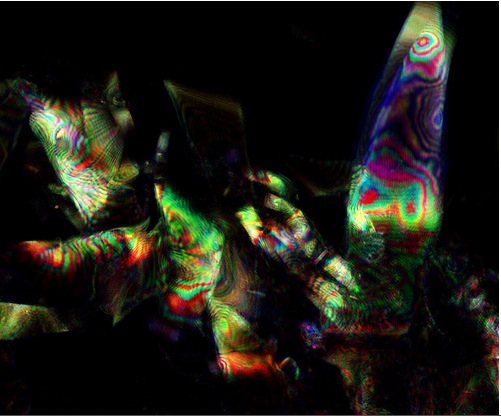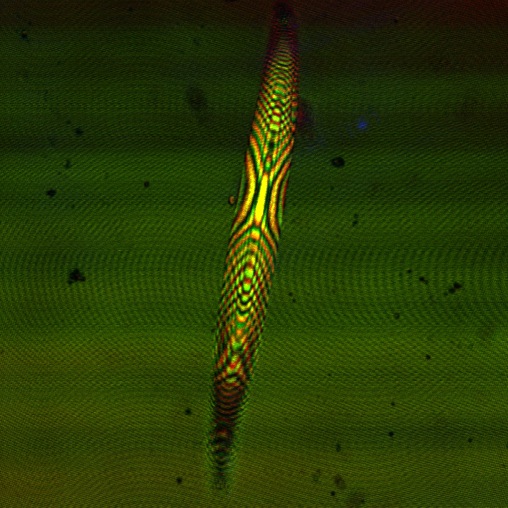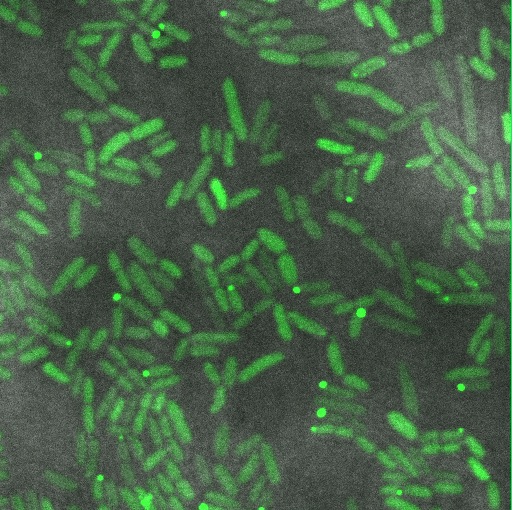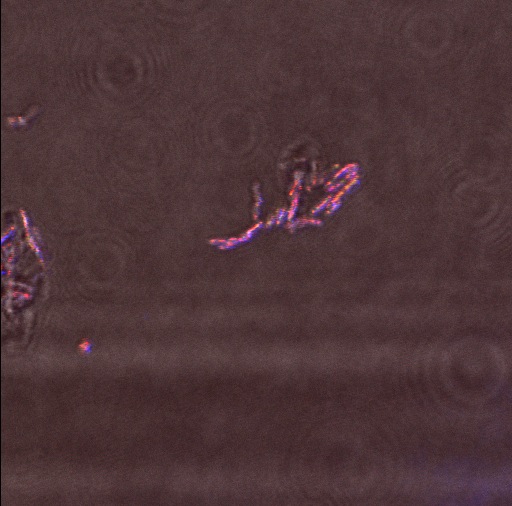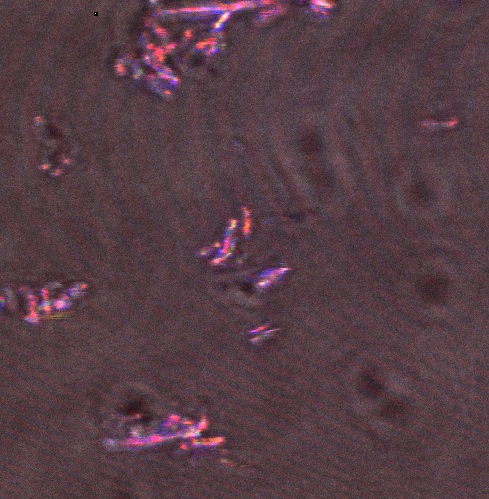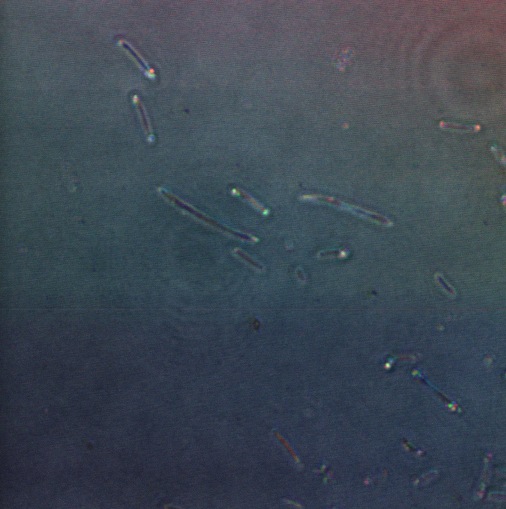Team:Cambridge/Project/Microscopy
From 2011.igem.org
| Line 22: | Line 22: | ||
[[File:Cam Periplasm Export Attempt 1.jpg |thumb| 600px| center| Bacteria expressing a TorA-ReflectinA1-GFP construct appear to produce fluorescent inclusion bodies, not a green halo in the periplasm as hoped.]] | [[File:Cam Periplasm Export Attempt 1.jpg |thumb| 600px| center| Bacteria expressing a TorA-ReflectinA1-GFP construct appear to produce fluorescent inclusion bodies, not a green halo in the periplasm as hoped.]] | ||
| - | [[File:Cam PBAD-His-Reflectin-negativecontrol1.jpg thumb| 200px| left| ''E. coli'' negative control ]][[File:Cam PBAD-His-Reflectin-uninduced1. | + | [[File:Cam PBAD-His-Reflectin-negativecontrol1.jpg |thumb| 200px| left| ''E. coli'' negative control ]][[File:Cam PBAD-His-Reflectin-uninduced1.jpg |thumb| 200px| center| ''E. coli'' transformed with our pBAD-His-ReflectinA1 construct, but not induced - no addition of arabinose]] [[File:Cam PBAD-His-Reflectin-induced.jpg | thumb| 200px| right| ''E. coli'' transformed with our pBAD-His-ReflectinA1 construct, induced by adding 1mM arabinose]] |
=Reflectin Thin Films= | =Reflectin Thin Films= | ||
<br style='clear:both' /> | <br style='clear:both' /> | ||
{{Template:Team:Cambridge/CAM_2011_TEMPLATE_FOOT}} | {{Template:Team:Cambridge/CAM_2011_TEMPLATE_FOOT}} | ||
Revision as of 16:54, 19 September 2011
Contents |
Preliminary observations
In order to get a real sense of what we were looking to achieve in our project, we felt that it was important to make some observations of native squid reflectin in vivo. We therefore obtained several specimens of Loligo opalescens and Loligo vulgaris squid from a local seafood restaurant and an online fishing bait store for dissection. We chose these species because the whole family of loliginid squid has been identified to contain reflectin, and these particular species were the only members of the family available to us. We used a confocal microscope to observe iridescent behaviour in eye and mantle tissue, by the following protocol. The stunning images produced provided a very useful reference to help us to identify what recombinant (well folded) reflectin could look like in E. coli, and definitely enthused the team to obtain bactiridescence!
Confocal Microscopy
Squid Tissues
We set the microscope to collect light reflected from the sample (emission and collection wavelengths overlap) as we were searching for iridescence. We'd like to thank Paul Grant who optimised the settings on the microscope. We then overlaid the images ourselves to produce the animated gif on the right.
We are very grateful to Fernan Federici who helped us, taking the image below using the 405nm, 488nm, 633nm laser beams and with the pinhole opened to a wider aperture.
We used the enzyme trypsin to isolate cells from the mantle of the squid as this frees them from the extracellular matrix. Again we used the confocal microscope in a configuration that detects reflected light.
Reflectin Expressing Cells
We fused a TorA export sequence to a reflectin A1-green fluorescent protein fusion in an attempt to export reflectin to the periplasm of E coli. Unfortunately, even on a low copy plasmid, it appears that the export tag has failed or we have saturated the export pathway and a backlog has occured. This means all cells have a detectable amount of GFP in their cytoplasm and fluorescent inclusion bodies in several of the transformed cells.
Reflectin Thin Films
 "
"

